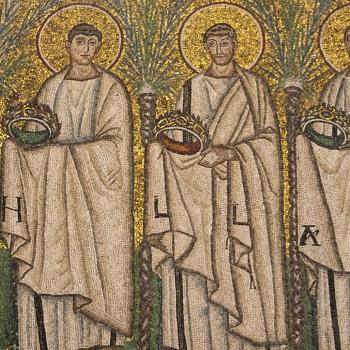
Circumcision is routinely practiced in two religions—Judaism and Islam. Some Christian communities—the Ethiopian Orthodox, Coptic Orthodox, and Eritrean Orthodox—also practice circumcision. Others from a variety of religious traditions or no religion at all may practice circumcision for cultural or health reasons. Western Christian traditions adhere to the New Testament guideline dispensing with the religious need for circumcision (Acts 15), and the Catholic Council of Florence (1431-1449) firmly prohibited circumcision. Today most Christians choose for or against circumcision for health reasons.
Judaism is the religion that is most closely and commonly associated with male circumcision. Unless there are overriding medical concerns, such as illness or hemophilia, all male Jews are to be circumcised eight days after they are born. This is true even if the eighth day falls on Shabbat, the Jewish Sabbath. For Jews, circumcision is regarded as an outward sign of their covenant with God, as established by God with Abraham (Genesis 17). The Bible goes on to address the spiritual reality represented by circumcision. It is a visible sign of a heart given to God (Deuteronomy 10.16).
For Jews, the practice is nearly universal and has been for thousands of years. Males who convert to Judaism are expected to be circumcised as well, regardless of their age. If they have already been circumcised for medical or cultural reasons or as part of their practice of their previous religion, then there will be a hatafat dam brit, the ritual removal of a single drop of blood with the intention of entering a male convert into the covenant of Israel. It serves as a ritual reenactment of the traditional Jewish circumcision the man would have undergone as an infant had he been born into the faith rather than converting later in life.
In Islam, male circumcision practices may vary greatly. Shia Islam views the practice as obligatory and recommends that male children be circumcised when they are seven days old. Shia converts are expected to be circumcised as well regardless of age as confirmation of their relationship with God and as a sign of purification. Sunni Muslims differ on circumcision, most viewing it as recommended but not required. For Muslims, circumcision is less a spiritual sign than it is a part of cleanliness, which is an important part of spiritual life and prayer. Circumcision is believed to keep the body cleaner, and thus more acceptable to God.
When people talk about circumcision in religion, they are usually thinking about the practice of circumcising male children, a practice that may have health benefits and has no known detrimental effects. Female circumcision, more accurately referred to as female genital mutilation (FGM), has no health benefits and is known to be the cause of serious health issues, including urinary infections, cysts, menstrual difficulties, infertility, depression, loss of sexual desire, increased likelihood of death in childbirth, and depression. FGM is condemned by the vast majority of religions. Despite the issuing of fatwas forbidding female genital mutilation, the practice persists in certain Muslim majority countries in Africa and Southeast Asia. It has been considered a cultural and societal tradition, and thus is also occasionally practiced in non-Muslim settings in these parts of the world.
3/14/2023 4:29:51 PM










